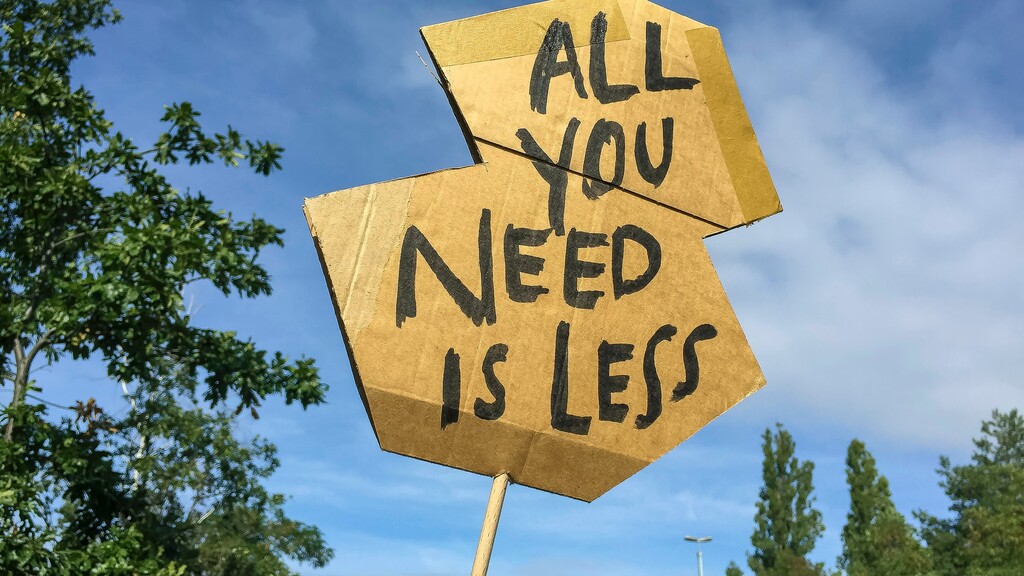

Our consumption accounts for the largest share of greenhouse gas emissions per capita, as a 2017 study by the German Environment Agency (Umweltbundesamt) shows. Almost 40% of emissions are attributable to other consumption alone. On average, a person in Germany produces 4,560 kg of CO2e per year for other consumption. This text mainly talks about CO2, but in scientifically correct terms we are talking about CO2 equivalents, the so-called CO2e.
What is meant by other consumption?
When people think of the term consumption, clothing, furniture and toys are often the first things that come to mind. But the term consumption covers many more activities than one might think at first. Especially free-time activities, such as streaming services, TVs and laptops make a large contribution to the individual CO2footprint and, depending on their use, contribute a corresponding share to other consumption. With regard to the calculation of CO2 emissions, production, transport and storage of consumer and consumable items are also counted in addition to actual use.
Buying new is no longer the way to do things!
A particularly large amount of CO2 is generated when buying new items, because it is precisely here that the CO2 emissions of production, transport and storage of the product only apply to an individual. If, on the other hand, people buy secondhand or at flea markets, the emissions are distributed among several people. At the same time, less is thrown away. Unfortunately, the trend toward sustainability continues to decline, particularly in the area of electrical appliances - both in terms of consumption and energy efficiency. Yet there is great potential to reduce emissions here in particular, because the manufacture of digital devices already accounts for almost 350 kg of CO2e per year. The main reasons for this are process chemicals for raw material extraction and processing, as well as energy consumption. In terms of CO2 emissions, the production of flat-screen televisions tops the list of digital devices with 200 kilograms per year of use.
Buy regionally and locally!
Although Germany is considered an export giant, almost the same amount of products are imported. These transport routes also contribute to an increase in the individual CO2 footprint. If products are sourced regionally, large amounts of CO2 consumption can be saved, as long transport routes across oceans by ship or plane are no longer necessary. In addition, faster delivery can be made more often, reducing long storage times.
Support for sustainable companies
Sustainability and regional as well as seasonal products should not only be used in food, but also in the choice of free time activities or clothing. Does the company where I purchase goods focus on saving CO2, does it support sustainable products, is production made sustainable and perhaps even compensation provided? All these questions and facts, among others, can be a focus when selecting a business.
Avoiding plastic as much as possible
With regard to one' s own plastic consumption, it is also possible to think about where exactly consumption takes place. Does the company pay attention to the reduction of plastic? Do they use sustainable, reusable alternatives when shipping clothes? Find out more about plastic here!
Reading instead of streaming
A lot of CO2 can also be saved when organizing leisure activities and their consumption. Especially when it comes to relaxed streaming, CO2 consumption shoots up; Netflix, for example, causes just under 440gr of CO2e in one hour. By comparison, a book causes no CO2 during use. Even with streaming services, the production of the films, series and videos, storage in the data centers and transport via the individual network structures are all part of the actual CO2 emissions of streaming at home. The use of high streaming quality in particular also causes this to shoot up. In contrast, reading hardly causes any CO2; only the production of the book and the manufacture of the paper cause CO2. However, this can be reduced by passing on or selling the books. If you can't do without streaming at all, you can save CO2, for example, by throttling the image resolution and increasing streaming via WLAN and LAN.
Sources:
UmweltbundesamtKonsum ; Umweltbundesamt Elektrogeräte; Purdue University ; KTH Royal Institute of Technology ; CO2online